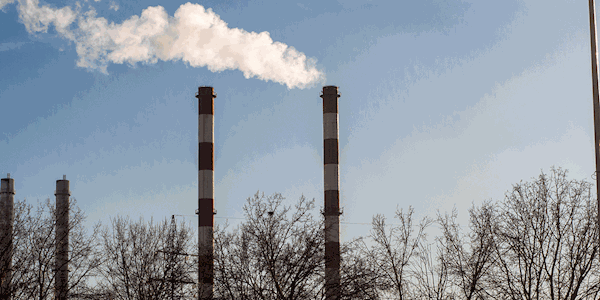Author: Ed Messer

Carbon credits, or offsets - permits that allow the owner to emit a certain amount of greenhouse gases - are becoming a key tool in the fight against climate change. The global market in voluntary carbon offsets was valued at roughly USD2billion in 2021, and is set to grow to between USD10B and USD40B by 2030, according to a recent report jointly authored by energy giant Shell and the Boston Consulting Group1.
Yet despite the scale of this market and the importance of carbon offsetting in many companies’ net-zero transition strategies, carbon credits and the real assets that underlie them are underinsured at present. One of the bleak ironies of the wildfires that have ravaged thousands of acres of forest over the last two years is that many of them were burning carbon offset plantations.
But the risks to carbon credits extend beyond the physical loss of the underlying forest. Differing views about the environmental value of some assets - not to mention the risks of outright fraud - has made some insurers and reinsurers wary of providing cover for offsetting assets.
Meanwhile, the carbon credits that derive from them are stored in digital registries with all the usual accompanying cyber risks. In addition, the ongoing debate about the role that digital blockchain tokens could play in carbon credit markets adds a further dimension to the perceived risk and complexity involved.
Reputation and risk
The reputation of carbon credits has been tarnished by a series of controversies. In some cases, forests supposedly underlying the carbon credits were never even planted, with the Vatican being one early high-profile victim2.
A more common problem is that offset projects are begun in good faith, but may not deliver the full amount of carbon dioxide removal (CDR) that was promised, either due to mismanagement or sheer bad luck.
More recently, questions have been asked about Reducing Emissions from Deforestation and Forest Degradation (REDD+) projects. Using a framework established under the Paris Agreement of 2015, these schemes create carbon credits not for planting trees, but for avoiding cutting them down. The rationale is that, if certain trees would have been cut down but investment allows them to remain, then this merits the creation of carbon credits.
Earlier this year, a joint investigation by The Guardian, Die Zeit and SourceMaterial led to the claim that more than 90% of rainforest carbon offsets were "phantom credits" that didn't represent real emissions reductions - because the threat of deforestation had been overstated to create the credits3. Verra, the world’s biggest certifier and register of carbon offsets, issued a strong rebuttal, insisting its methodology was sound4.
Another study, by academics from several institutions including the University of Cambridge and Vrije Universiteit Amsterdam, published in Science in August 2023, claimed most REDD+ projects were less beneficial in reducing deforestation than claimed5. Again, Verra disputed the findings, claiming the sample size of projects studied was too small6.
Nevertheless, these challenges illustrate that methods for calculating the real carbon value of offset schemes have become the subject of contention. Numerous companies that paid to offset their emissions have subsequently found themselves linked with controversy.
Carbon credits remain a valid element in the transition to net zero and are recognized and supported by the United Nations and the Conference of the Parties (COP). But the potential risks — both to the value of investments in carbon credits and to corporate reputations — are real. Companies may be accused of "greenwashing" if climate activists, customers or the general public perceives that a company’s use of carbon credits doesn't bring the environmental benefits promised.
Building confidence in the carbon credit market is vital for an orderly transition to net zero. An effective insurance market for carbon credits will be an essential part of building that confidence.
Insurance for a secure and orderly carbon credit market
The insurance industry is already responding to the demand for cover, with several insurers specializing in the forestry assets behind carbon credits. Parametric products are part of the solution for timber and forestry operations, using satellite imagery to assess the scale of wildfires and triggering payments based on the area destroyed. Payments can be designed to match not just the loss of trees, but also the accompanying loss of carbon credit value and the cost of replacing forestry.
Several insurers offer cover for carbon credits. Providing policies to cover the invalidation or devaluation of carbon credits allows companies to commit capital to CDR projects safe in the knowledge that the financial value is protected if the expected CDR isn't realized in practice.
The global market for CO2 emissions was kick-started at COP3, held in Kyoto in 1997, but the ongoing uncertainties and reputational issues suggest it's still not yet fully matured. Insurance will be an essential element in bringing the market to maturity, and it will have a part to play at every stage in the creation and trading of carbon credits.
Data and risk methodologies for the underlying forestry can accurately price physical risk and assist in validating the quality and value of the offsets being purchased. Cover for the credits will help organizations trade with confidence, by bringing greater certainty to the financial value of their assets, while cyber cover can address the risk involved in digital assets.
The insurance industry will need to invest in developing the data and analysis needed at every stage, while product innovation will also be essential to match the unique risks posed by the creation and trade in carbon credits.
Given the expected growth in the use of carbon credits, there's a huge opportunity for the insurance sector. It's also a chance for the industry to make a vital contribution, as the ability to invest confidently in carbon credits will be essential for a successful and orderly transition to net zero.


